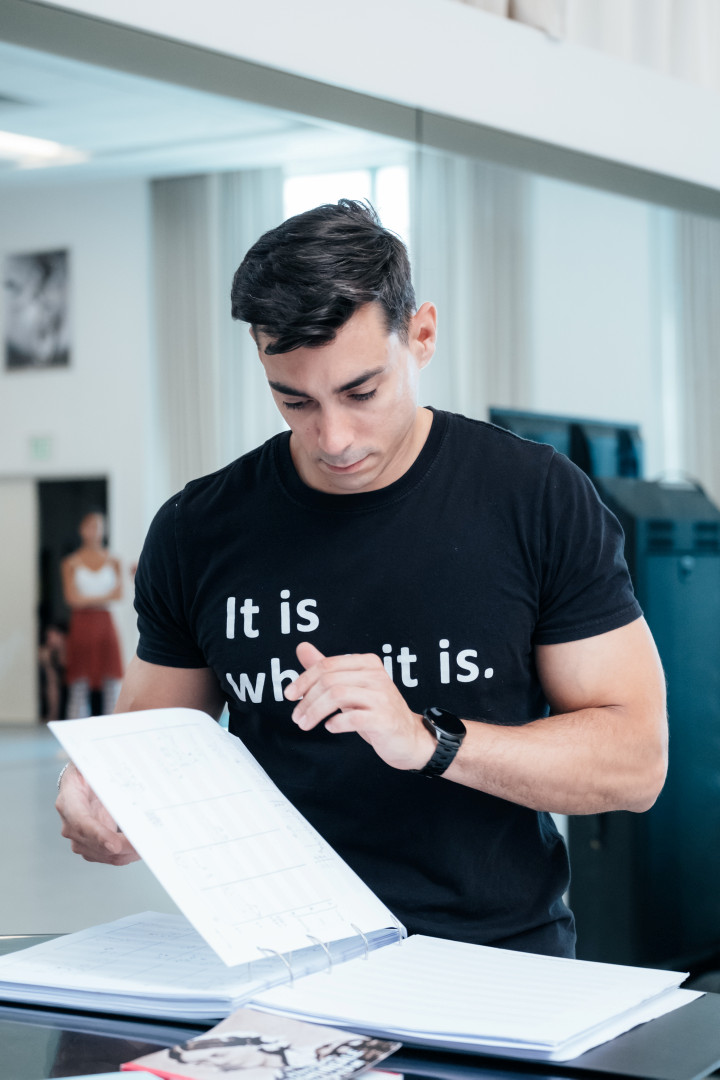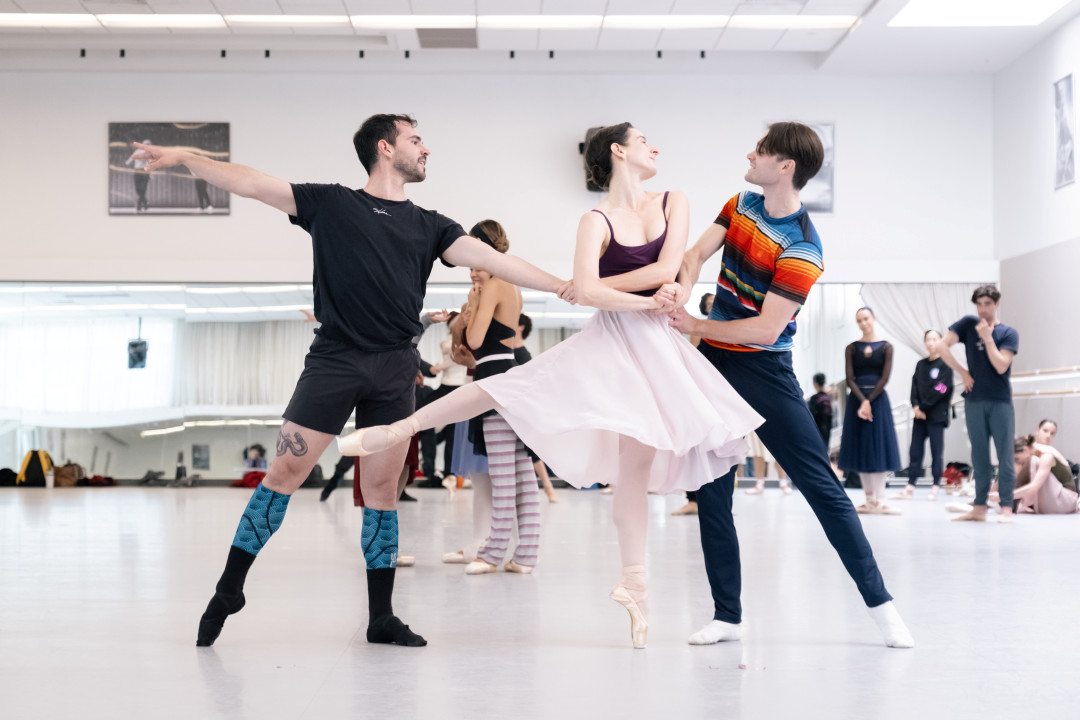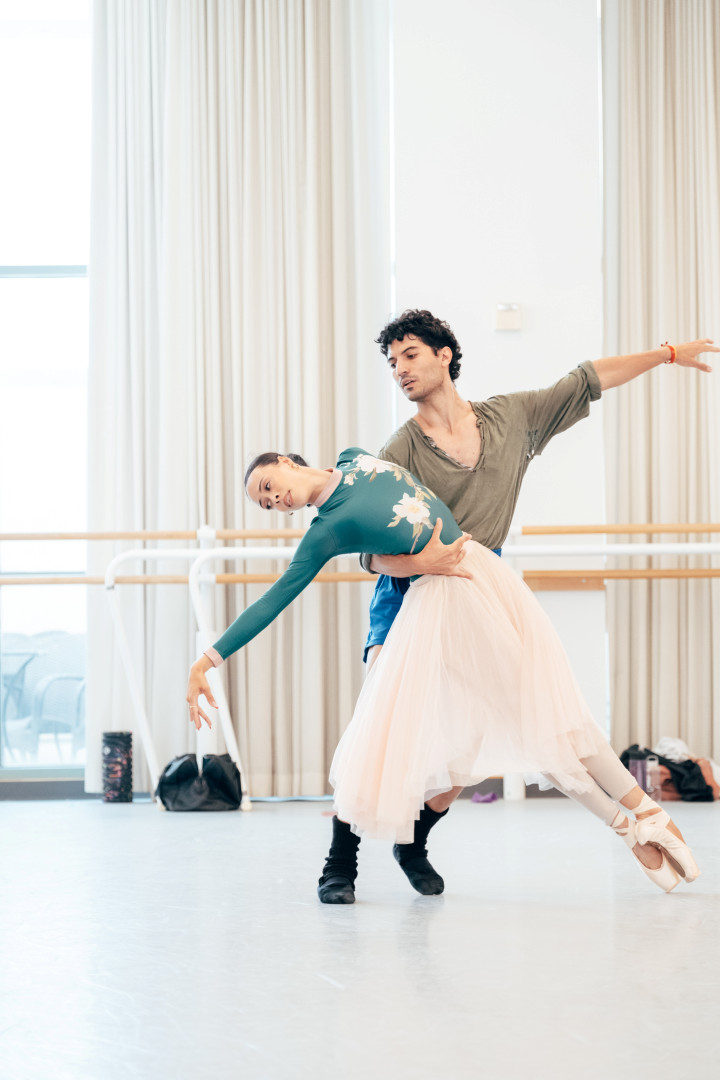What is a Choreologist?
Meet the Man Who Pieces Together Dance History
Daniel Kraus was a professional dancer for 20 years performing in companies like the Mediterranean Ballet, directed by Fernando Bujones, European Ballet, K-Ballet in Japan, and English National Ballet where he was a dancer for 17 years. After retiring from stage in 2020, he graduated with distinction from the Professional Award in Benesh Movement Notation followed by a postgraduate diploma by the Benesh Institute. He has been working as a Benesh Choreologist with the Royal ballet since 2022.
We sat down with him while he was in our studios setting Tamara Rojo’s Raymonda for the 2025 Repertory Season.

SAN FRANCISCO BALLET: What is a choreologist?
Daniel Kraus: A choreologist has two roles. One role is to notate, to write new choreography on paper, and the other role is to be able to read and stage it. So another word would be stager. We stage ballet based on original choreography, and preserve the work for future generations.
SFB: What drew you to becoming a choreologist?
DK: I was a dancer for 20 years mostly at English National Ballet, and in the last years of my career I spoke to Tamara and it was her idea to have me study dance notation. I studied the Benesh Movement Notation for 4 years, which even with my background in dance, was like learning an entirely new language.
For me, it’s important to preserve the legacy of wonderful choreographers that would otherwise be lost. Benesh also serves as copyright protection for the creators, which is important for the integrity of the work. This is my small contribution to the artform, it’s my way of giving back.
SFB: What is the background of the Benesh Movement Notation?
DK: The Benesh Movement Notation is a visual system for recording human movement in dance that was created in 1937 by English artists Rudolf and Joan Benesh, who worked for the Royal Ballet. They devised this system because before that there wasn’t any official way to record choreography. It’s a very thorough system, you can notate ballet, hip hop, Indian dance, or any kind of movement. In theory, you can notate anything, including recording emotions, ways of breathing, eye angles, absolutely anything.
SFB: Thinking of notation vs video regarding, is there an argument of why not just use videos to capture these pieces?
DK: The thing with videos is that you record a moment in time, a specific moment of a dancer. If they decide to do something different on that day, or something doesn’t go according to plan, or if they make mistakes, then that’s what will be followed, and it gets further and further away from the original choreography. So, it’s important we have this written version. While dancers will always have their own interpretation, which is lovely, it’s always good to go back to the true original. With Raymonda, we have two or three videos, and they are all slightly different. My job is to go back and capture the integrity of the original.
SFB: What does your process look like?
DK: The most important thing is preparation. If I’m going to be in the studio preparing a ballet, I get started a couple of months before so by the time I get there I can teach all the steps. I like to give them a structure with steps and counts, teach quickly, then later go into details and add layers to make sure it’s cohesive.
I reference a large book, called the score, also known as “The Bible”, because it has every detail of the work including choreography, scene changes, sets, props and whatever the piece is going to need to stage the ballet. The Raymonda score is very complete, about 325 pages long. It’s impossible to remember where everyone goes at any given time, so we can easily reference this to know every detail of the ballet. Because of all this detail, notating a ballet is very time consuming, a ballet like Raymonda takes months.

SFB: Are you focused mostly on steps and formations, or do you also dive into the characterizations, quality of movement, and emotional portrayal of the roles?
DK: First, we do the steps and the counts and from there we build on characterization and style. Once they know the steps they can begin to work on the drama and character.

SFB: How are you getting started with Raymonda? How does it feel to be in the studios with our dancers?
DK: Because Raymonda is a 19th century ballet by Petipa, there isn’t too much recorded of the original. There are some records I know Tamara Rojo went through, but it’s not very detailed. So, Tamara kept the original choreography as much as possible, but the big numbers are all her idea and her choreography, including changing the time period and location of the ballet, focusing it around the Crimean War (1853-56).
With Raymonda there are so many different numbers and steps, so we’re starting slowly learning piece by piece, step by step. We don’t ask for perfection at the start, we want to give an idea of what the piece is about and then we start cleaning and until it’s all put together and perfect.
Last season I was here staging Annabelle Lopez Ochoa’s Broken Wings, and it’s fantastic to be back working with the dancers. I am so happy to be here and feel very comfortable here at SF Ballet.

Watch Daniel Kraus discuss his role as a choreologist
Tamara Rojo’s Raymonda has its SF Ballet premiere in the 2025 Repertory Season.








